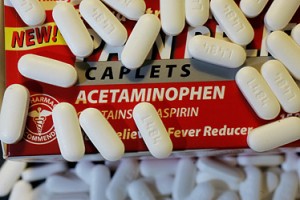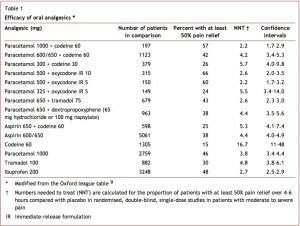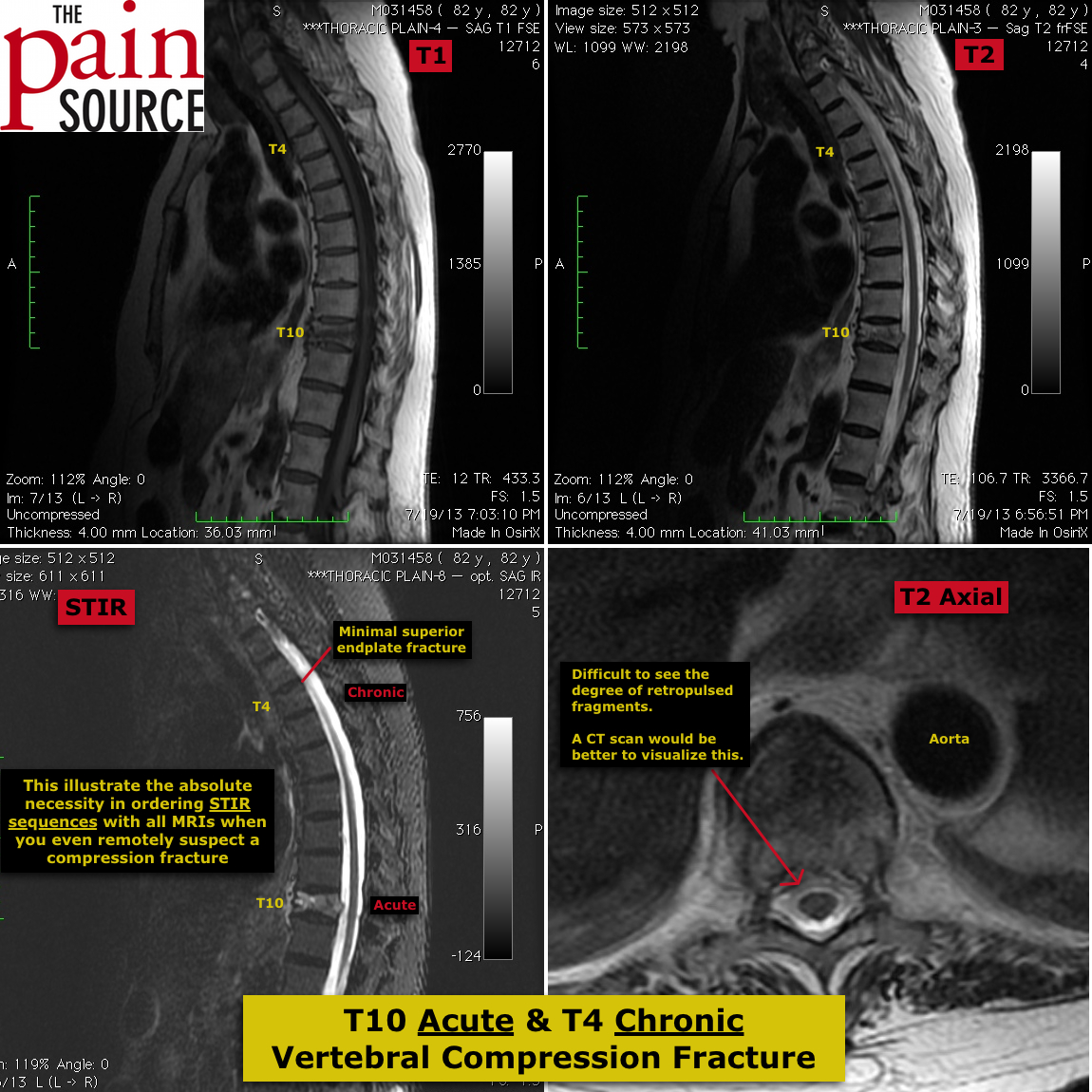By Chris Faubel, MD —

Names: acetaminophen / paracetamol (Tylenol)
- Combinations with opioids
- with tramadol = Ultracet
- with hydrocodone = Norco, Vicodin, Lortab
- with oxycodone = Percocet
Mechanism of Action – Analgesic
- Weak inhibitor of prostaglandin synthesis centrally [1]
- Has other analgesic mechanisms at the spinal cord and cerebral cortex [4]
Uses
- Drug of choice for relieving mild to moderate musculoskeletal pain (especially osteoarthritis)
- Acute migraine headaches: paracetamol 1,000-mg + metoclopramide 10-mg (Reglan) is as effective as sumatriptan 100-mg [5]
Benefit over NSAIDs
- Does NOT interfere with the anti-platelet effect of aspirin (as ibuprofen does) – no increased risk of stroke
- Does NOT cause renal or gastrointestinal problems
Synergistic Action

- The combination or concurrent use of acetaminophen with various opioid analgesics (oxycodone, tramadol, etc.) has shown synergistic effects. [3] See the image below.
- Brings together two different but complimentary mechanisms of analgesic action.
- Benefit: Lower individual drug doses
Metabolism
- Microsomal enzyme system in the liver (shared by other analgesics, anticonvulsants, antibiotics, and other drugs) – including the P450
- When taken in normal doses in healthy patients, all metabolites are eventually broken down to non-toxic end products.
- If the patient is a “rapid metabolizer”, takes too much, or is a chronic alcohol abuser, the metabolite “NAPQI” accumulates and is toxic to hepatocytes.
- Glutathione in the hepatocytes normally conjugates the NAPQI to make it non-toxic.
- Chronic alcohol abuse (3 drinks per day) induces microsomal enzymes leading to a quicker production of NAPQI (patient’s glutathione can’t keep up).
- Excretion = urine
Overdose
- The most common cause of acute liver failure [2]
- Accidental overdoses are frequent because acetaminophen/paracetamol is found in many OTC products for the treatment of the flu, colds, and menstrual cramps. [for a list of products, click here]
- Treated most commonly with intravenous N-acetylcysteine.
- Acetylcysteine is a glutathione precursor.
- Dosing (for older children and adults)
-
- 325 to 650mg every 4-6 hours
- Do NOT exceed
- 4,000-mg in a 24-hour period
- a single dose >1,000-mg
- doses near 4,000-mg per day for > 10 days
- a 2,000-mg daily limit in chronic alcohol abusers
- Do NOT exceed
- 325 to 650mg every 4-6 hours
-
- In 2009, an FDA Advisory Panel recommended limiting the maximum daily dose to 3,000-mg, banning its combination with opioids (such as Vicodin and Percocet), and many other actions, but these are still being debated by the FDA.
REFERENCES:
1 – Graham et al. “Mechanism of action of paracetamol”. Am J Ther. 2005 Jan-Feb;12(1):46-55.
2 – Ostapowicz et al. “Results of a prospective study of acute liver failure at 17 tertiary care centers in the United States” Ann Intern Med. 2002 Dec 17;137(12):947-54.
3 – Gatti et al. “Oxycodone/paracetamol: a low-dose synergic combination useful in different types of pain” Clin Drug Investig. 2010;30 Suppl 2:3-14
4 – Loes, MW. (2005) “Chapter 10: Acetaminophen and Nonsteroidal Anti-Inflammatory Drugs” Pain Medicine and Management: Just The Facts. The McGraw-Hill Companies, Inc.
5 – Derry et al. “Paracetamol (acetaminophen) with or without an antiemetic for acute migraine headaches in adults” Cochrane Database Syst Rev. 2010 Nov 10;11:CD008040.















